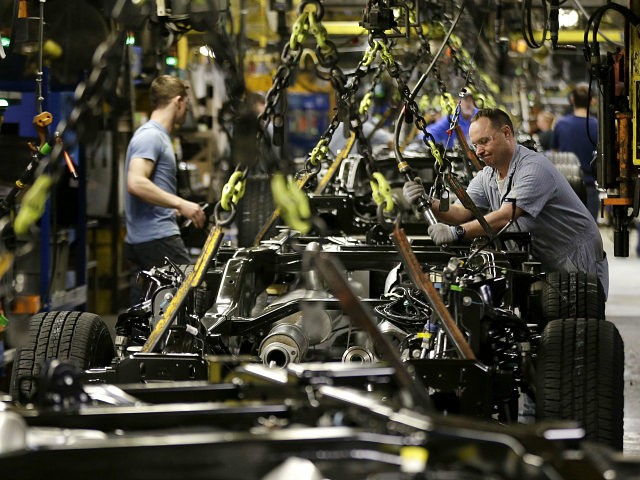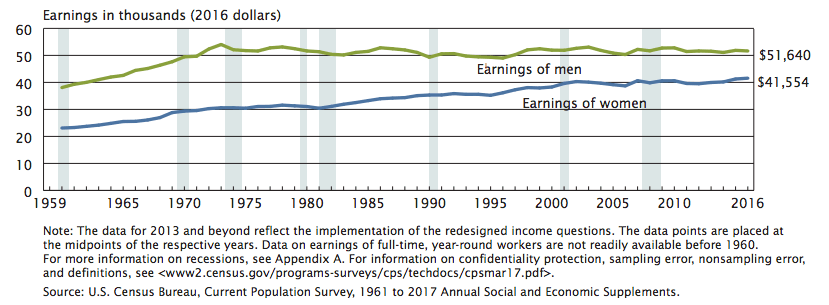The New York Times said on November 2 that President Donald Trump’s high-pressure economy “is the best time for the American labor market in at least 18 years and maybe closer to 50.”
In 1968, per capita wages and salaries grew by 6.65 percent, after inflation is included, and then it grew by another 5.4 percent in 1969, according to the U.S. Census Bureau.
Five decades ago, Hey Jude bumped Harper Valley PTA out of the number one chart spot:
Fred Astaire starred in his irony-free song-and-dance movie, Finian’s Rainbow:
The movie theaters were also playing much darker movies, such as Night of the Living Dead and Steve McQueen’s Bullitt:
A new home cost $15,000, average monthly rent was just $130.00, and gas cost 34 cents per gallon. The average price of a new automobile was $2,822.00, and the minimum wage was $1.60 an hour.
Jackie Kennedy got married to the Greek shipping billionaire, Aristotle Onassis:
The NYT’s comparison to the 1960s was caused by the good news in the regular agency report about the October economy. Breitbart News reported:
Wage growth, long considered the “missing ingredient” to the economic expansion, has finally returned. Average hourly earnings climbed by five cents an hour for the month, or 83 cents year-over-year. That represents a 3.1 percent gain, the first time wages have grown more than 3 percent year-over-year.
The New York Times noted:
The number of adults not in the labor force at all fell by 487,000.
And employers evidently needed to pay higher wages to coax these workers off the sidelines. Long the soft underbelly of this expansion, average hourly earnings are now up 3.1 percent over the last year, from 2.8 percent in the previous reading.
Put it together, and this is the best time for the American labor market in at least 18 years and maybe closer to 50.
Since 1973 — aside from a brief spike in the late 1990s — wage growth has remained flat, partly because the federal government helps employers by pumping hundreds of thousands of foreign workers into the labor pool each year. In 2016, for example, President Barack Obama brought in 1.75 million immigrants, visa workers, and illegal immigrants to compete for jobs against the four million young Americans who joined the workforce that year. The post-1973 flatline is obvious in this chart released by the U.S. Census Bureau:
Back to the 2018 good news: Trump’s 2018 wage growth is higher for blue-collar employees than for white-collars — roughly 6.5 percent vs. 4 percent for white-collar. But his wage growth numbers are expected to rise in 2019 as investors are gradually forced to compete for the shrinking pool of unemployed Americans. Of course, companies will happily hire cheaper foreign workers — legal or illegal — who enter the United States in 2019.
So the wage raises may suddenly stop in 2019 if Trump listens to the business and investors groups that are pleading with him to allow more foreign workers, such as the illegals trafficked in the U.S. by the cartels, the Hondurans in the caravan, and the foreign students using the “Optional Practical Training” program.
One vehicle for their hopes is Republican Rep. Kevin Yoder’s H.R. 392 bill in December, which would import more guest workers and more immigrants. If Trump endorses Yoder’s more-cheap-labor bill this December, investors will know they will never run out of workers — and will never have to raise wages — because they can pressure the president to fly more foreign workers into Newark and Los Angeles.
The New York Times added a caveat to Trump’s go-go economy, saying, “It would be nice to see sustained wage growth substantially higher than inflation, not just in a single month, before making any comparisons to the boom of the late 1960s.”
Trump has the power to reach for a 1960s repeat and to sustain wage raises right up to his 2020 re-election — and he also has the power to flatline wages and lose his 2020 re-election. He will show his hand in December.


COMMENTS
Please let us know if you're having issues with commenting.